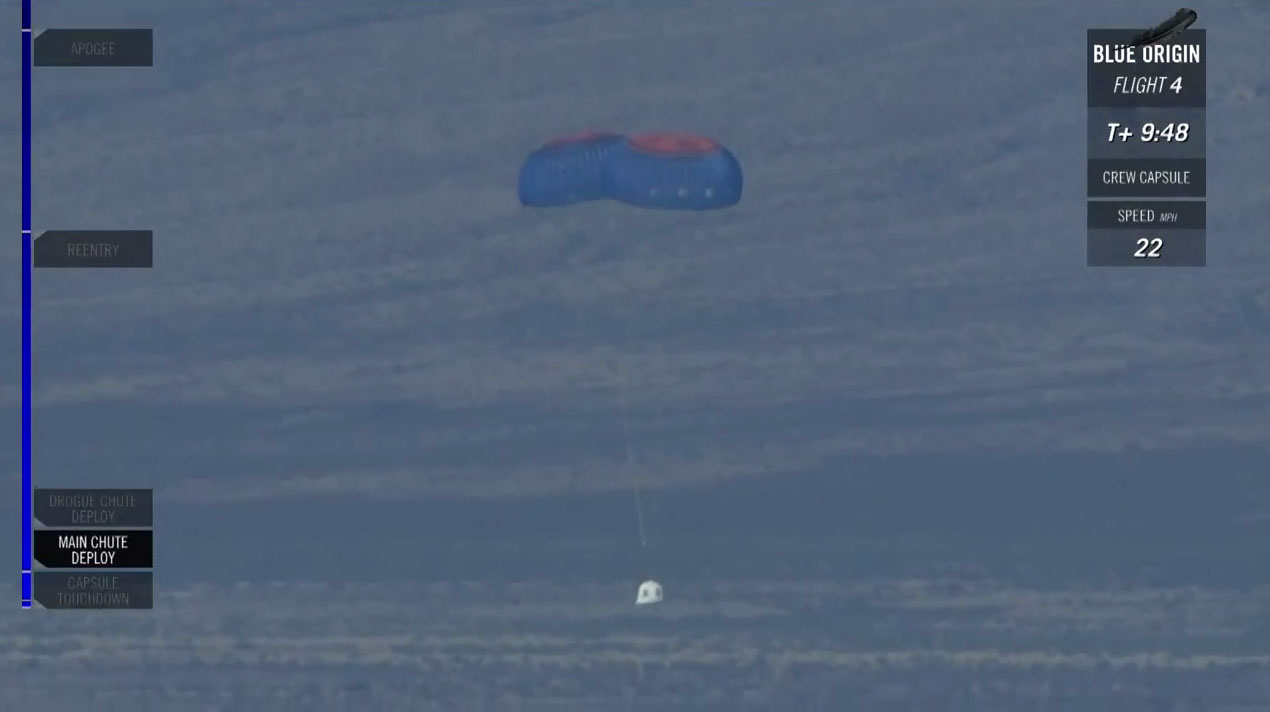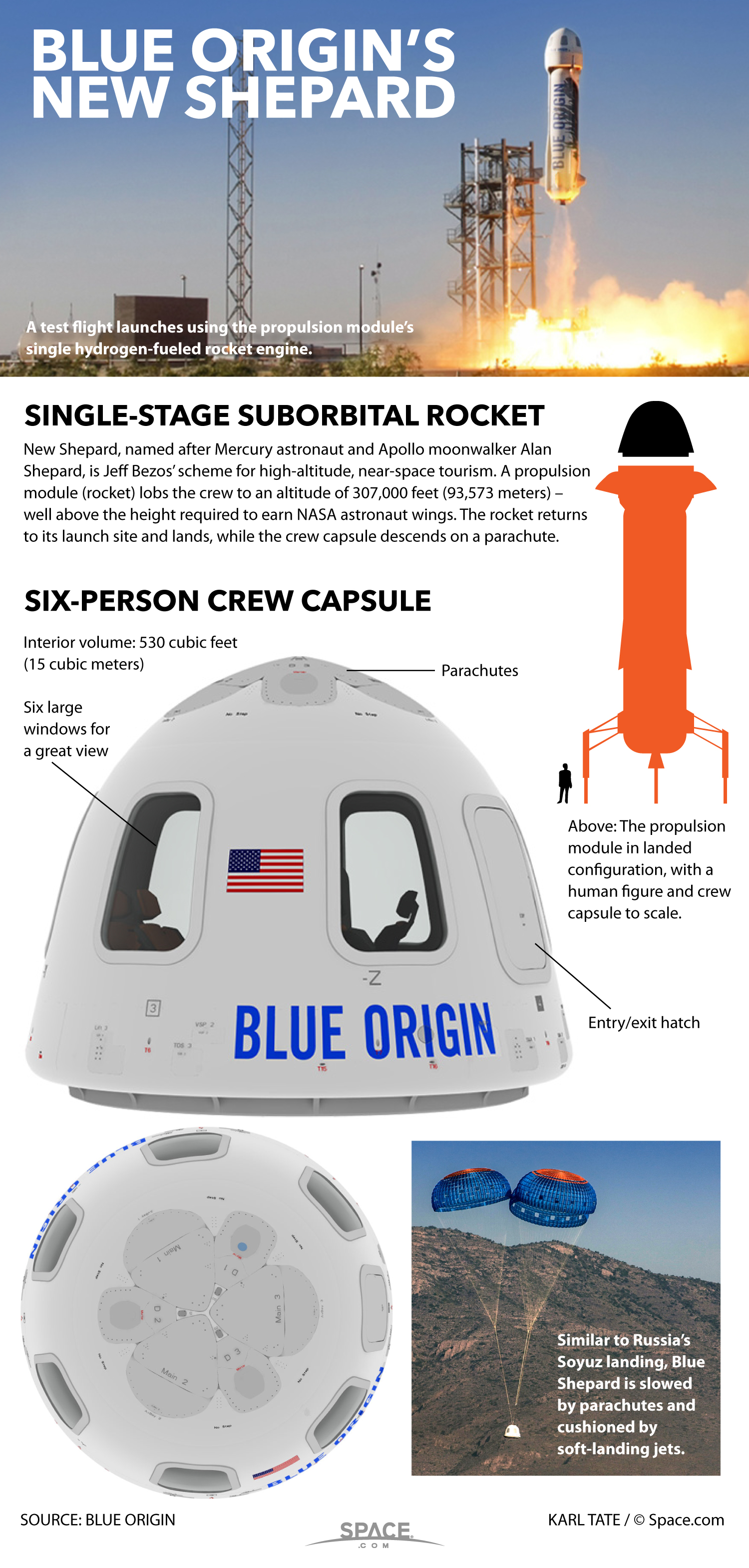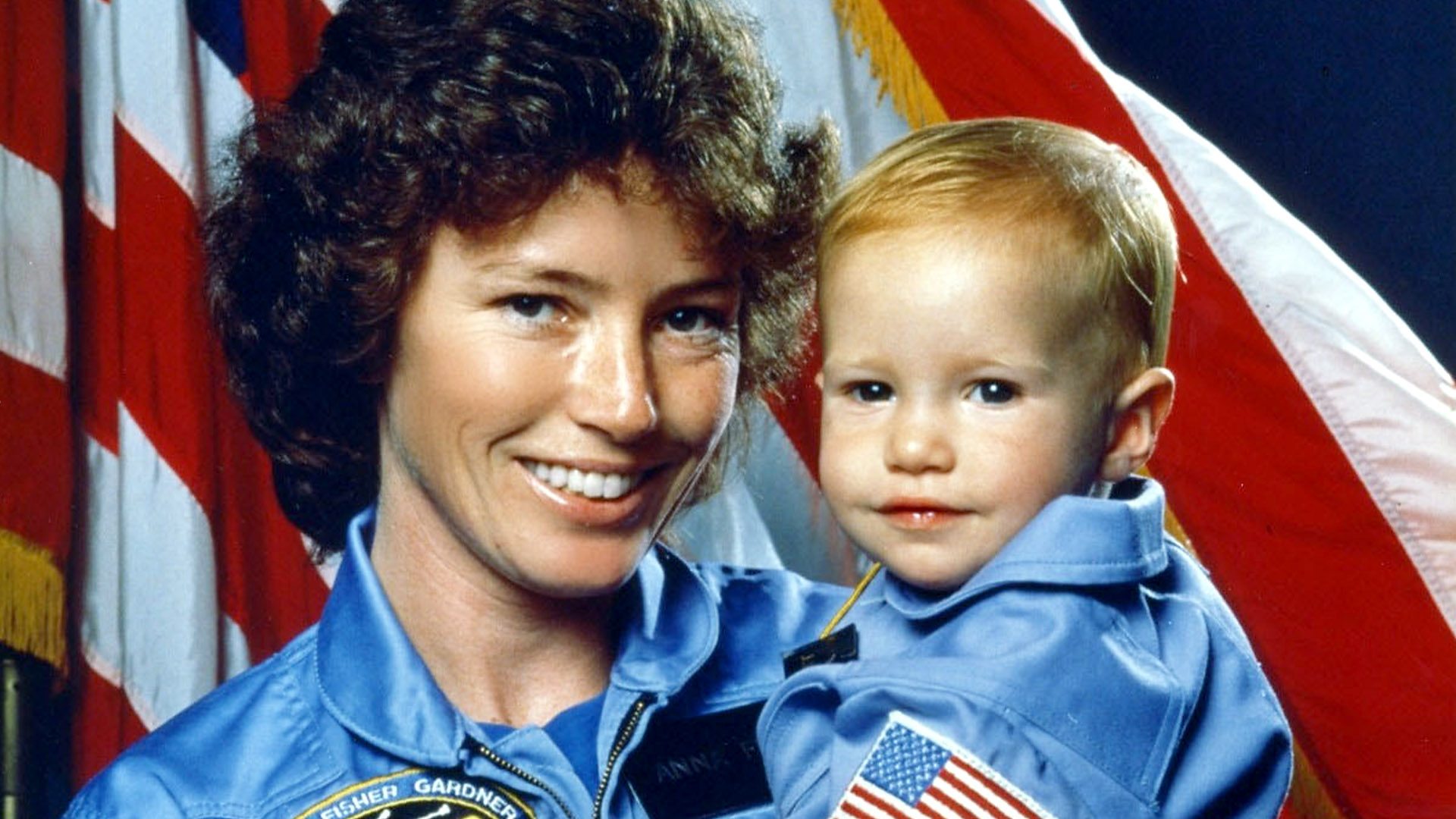Blue Origin Aces 4th Reusable Rocket Launch (and Landing) in Live Webcast

Billionaire Jeff Bezos' Blue Origin launched and landed a reusable rocket for the fourth time Sunday (June 19), with the typically secretive private spaceflight company making its first-ever live webcast of a test flight during the successful mission.
Blue Origin's unmanned New Shepard rocket and space capsule launched into the clear West Texas sky at 10:36 a.m. EDT (1436 GMT), carrying its crew capsule into suborbital space before both craft returned to Earth in separate landings.
New Shepard's booster made a pinpoint landing near its launch site 8 minutes after liftoff, with the capsule touching down a minute lander after descending to Earth under two parachutes. Blue Origin's main goal for the flight was to test how the capsule would perform with just two of its three main parachutes deployed.
"Careful engineering plus of course ... the lucky boots. Successful mission," Bezos wrote on Twitter after the launch that included a photo of its "lucky" cowboy boots, which carry Blue Origin's motto "Gradatim Ferociter," Latin for "Step by step, ferociously." [Blue Origin's New Shepard Launch System Explained (Infographic)]
During Sunday's launch, New Shepard reached a peak altitude of 331,501 feet (101,041 meters). That's 62.7 miles (101 kilometers), just above the 62-mile boundary between Earth and space. While the capsule only needs one parachute to land safely, it carries three to be safe and Sunday's test monitored how the craft would handle a two-chute landing, according to Blue Origin representatives.
"That was magic," said Ariane Cornell, of Blue Origin's Strategy and Business Development team, who was a co-host during the live webcast. "It was an impeccable test mission for us."
New Shepard is not designed to launch all the way into orbit. Instead, the launch system is built to fly up to six people into suborbital space, with the capsule returning to Earth under parachutes while its booster lands vertically using the same BE-3 rocket engine it uses for launch.
Breaking space news, the latest updates on rocket launches, skywatching events and more!
The Kent, Washington-based Blue Origin plans to sell tickets for space tourism flights on the capsule, but has not yet released a price for those joy rides. During such flights, passengers will experience several minutes of weightlessness and be able to see the Earth from space through New Shepard's huge windows, Blue Origin representatives said.
"You have no idea how badly I want to fly on this right now," Blue Origin engineer Geoff Huntington, a webcast co-host, said just before the launch.
The New Shepard capsule can also carry research payloads and has done so on past test flights. During Sunday's launch, the capsule carried three different microgravity science payloads, including a dust collision experiment for Braunschweig University in Germany; a fluid flow experiment for Louisiana State University and William Jewell College; and fluid shape experiment for Purdue University.
Sunday's Father's Day flight marked the fourth launch and landing for New Shepard since its debut in November 2015, and follows similar tests in January and April. This latest flight was initially scheduled for Friday, June 17, but Blue Origin delayed it to allow time to replace a leaky O-ring on the booster.
"Watching a rocket launch (and rocket landing!) might add a little extra fun w/kids on Father's Day. #GradatimFerociter" Bezos wrote on Twitter on Friday.
And that was the case for at least Huntington.
"This definitely made my Father's Day," he said.
Huntington said the public should expect more New Shepard test flights to come this year, including a demonstration of the crew capsule's in-flight abort system to pull astronauts to safety during a launch emergency.
Email Tariq Malik at tmalik@space.com or follow him @tariqjmalik and Google+. Follow us @Spacedotcom, Facebook and Google+. Original article on Space.com.
Join our Space Forums to keep talking space on the latest missions, night sky and more! And if you have a news tip, correction or comment, let us know at: community@space.com.

Tariq is the award-winning Editor-in-Chief of Space.com and joined the team in 2001. He covers human spaceflight, as well as skywatching and entertainment. He became Space.com's Editor-in-Chief in 2019. Before joining Space.com, Tariq was a staff reporter for The Los Angeles Times covering education and city beats in La Habra, Fullerton and Huntington Beach. He's a recipient of the 2022 Harry Kolcum Award for excellence in space reporting and the 2025 Space Pioneer Award from the National Space Society. He is an Eagle Scout and Space Camp alum with journalism degrees from the USC and NYU. You can find Tariq at Space.com and as the co-host to the This Week In Space podcast on the TWiT network. To see his latest project, you can follow Tariq on Twitter @tariqjmalik.



